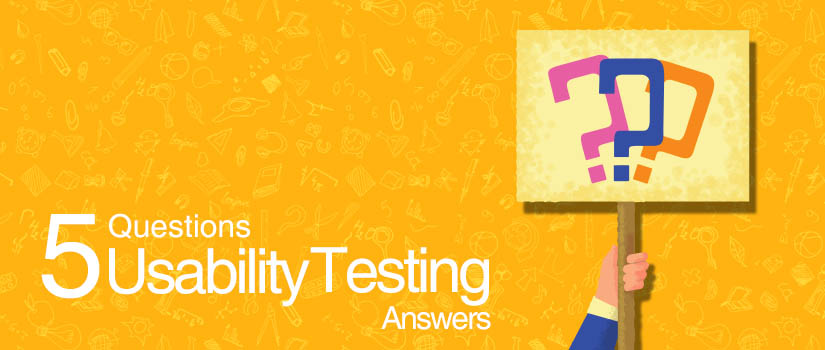Usability testing is a testing technique used to evaluate the software by involving real users. The purpose of this test is to review the application/software under real world conditions.

Let’s sum up the total benefits of usability testing into five basic questions
- Does the tested product meet customer’s needs?
- Is navigation of the tested product convenient for the user?
- Is functionality of the tested product clear for the user?
- What are the possible errors that can occur?
- How to fix them?
Now, let us evaluate each question individually.
1. Does the tested product meet customer’s needs?
Customers’ needs are not complex; all they want is an efficient, simple, easy and interesting application.
But following those needs are not simple for the testers.
So, the main objective a tester and the developer have to focus on is to meet the needs of the customers.
Usability testing is not about finding the defect but about,
Whether the user likes the application?
The features they haven’t liked
How they felt about the application?
As we said earlier, we just need a raw data about how the application worked for a user.
These concepts and suggestion collected from the user can be applied in the application to make it better and user-friendly.
2. Is navigation of the tested product convenient for user?
Navigation has to be at the top of the priority list of an application developer. Users always have a tendency to move from one link to another, and then, come back to previous page at instant. So, navigation should be convenient for the user.
It will be annoying if navigation is confusing or not proper. Navigation link should not leave user lost. A good design with clustered navigation means the application is a failure.
So, the next and important goal of developer is to check whether the navigation’s are clear, simple and proper.
Users may not have time to view all the details in the page. It doesn’t matter if the page is fancy or not. All that matters is that the users get the exact piece of information they search for. Therefore, try to keep it moderate.
Remember, search menu, home page and site maps are unavoidable navigators.
3. Is functionality of the tested product clear for the users?
How a product works is a common question that can possibly arise from a user. That’s why functionality should be clear for them.
Functionality of a tested product is associated with how well the app performs its function. So, the user must be fully aware about the functions an app does.
An application must pass both functionality test and usability test to be termed efficient. Usually, functionality test is done after usability test.
They are basically ‘what can I do’ and ‘how can I do?’
Usually, functional test comes after usability test is done. However, here, functionality is about enlightening the user about how the application works, i.e., the functions of an application.

Ensure that in what all aspects the product can do and enables users to have a set of capabilities.
4. What are the possible errors that can occur?
There is a saying that “to err is human”
The purpose of usability testing is to ensure the quality of software. As we said earlier, this test is done with the participation of the end user and how they react to the software. The errors happening at this level is totally humane.
Let’s look upon the possible errors that can occur
1. Slips
2. Mistakes
3. User interface problems
4. Scenario error
Slips
They are the by-hand mistakes that happen unexpectedly or unknowingly
For e.g. double-clicking a button accidentally, mistyping any characters in email id or name
Slips cannot always be avoided. You cannot do anything about ‘fat fingers;’ but, inserting a moderate area considering this ‘fat finger’ fact will be helpful.
Mistakes
Mistakes are referred to as any occurrence that happens without a need. Doing anything wrong can be considered as a mistake
E.g.: entering first two letters of name in block instead of only first letter, pressing horn instead of turning on light.
If user enters data in wrong format, any auto rejection setting or indication will be useful.
User interface problems
They are basically caused by wrong interference. If a user clicks in a wrong place and looks for a result, that maybe considered for change in style of software.
Scenario error
No matter how much realistic the usability testing is, possibility of error cannot be rejected.

If the testers want the users to try an online cash transfer application, fake data is required. Inevitable error can occur in such cases where there is nothing much to do with it rather than considering it in real situation.
5. How to fix them?
- Test a lot
- Test with correct representatives
- Plan properly
- Test in multiple versions of device
- Always conduct pilot test
- Avoid unwanted distractions
- Take enough time to analyze the results
